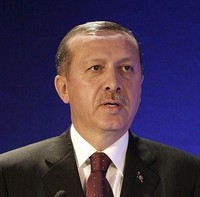Turkey’s defense procurements to date have focused heavily on defensive systems aimed at the former Soviet Union and offensive systems designed to attack the Kurdistan Workers Party (PKK). Backed by the safety and security offered by the North Atlantic Treaty Organization’s collective security guarantee, as well as between 60 and 70 American tactical nuclear weapons stationed on Turkish soil, Ankara revamped its national security strategy in October 2010. In a sharp departure from the past, Ankara announced that it was removing old foes Iran, Iraq, Greece and Russia from the list of countries considered to be a threat and embarking on a more inclusive foreign policy.
While the events of the past 18 months have altered Turkey’s security situation, Ankara has not announced any changes to its 2010 defense policy. Turkey remains committed to its long-standing pursuit of defeating its Kurdish insurgency, establishing regional stability and securing economic and political influence in neighboring countries. Therefore, Turkey’s recent announcement that it intends to develop 1,500-mile medium-range ballistic missiles is a bit baffling. The missile is not useful for the fight against the PKK, nor is it entirely clear whom Ankara will aim it at.
In general, ballistic missiles have little military value due to their inaccuracy, which limits their effectiveness when carrying conventional warheads. As a result, they are primarily used for the delivery of nuclear weapons, whose large blast and devastating fallout ensure the destruction of the mission’s target. For conventional strikes, however, military planners have long demanded greater accuracy and reliability. Cruise missiles, which Turkey is also developing, have increasingly become the weapon of choice for states seeking to bolster long-range strike capabilities. They are cheaper to build, more accurate, immune to missile defenses and can be launched from a variety of different platforms. Ankara has recognized the value of these weapons, purchasing the Israeli Popeye and embarking on a program to develop indigenous short- and longer-range variants.

